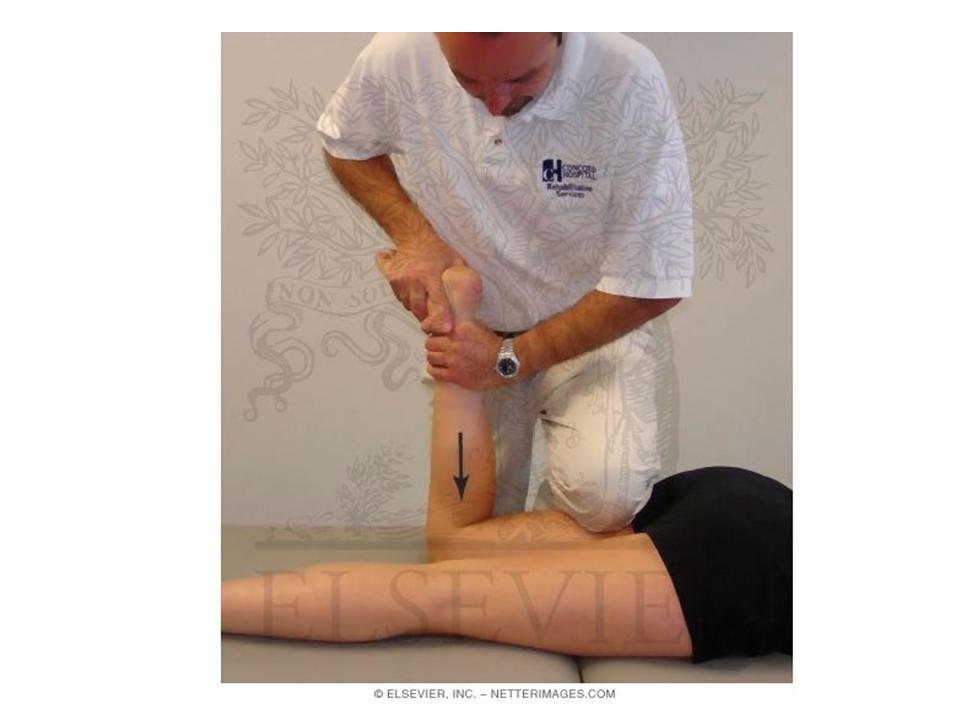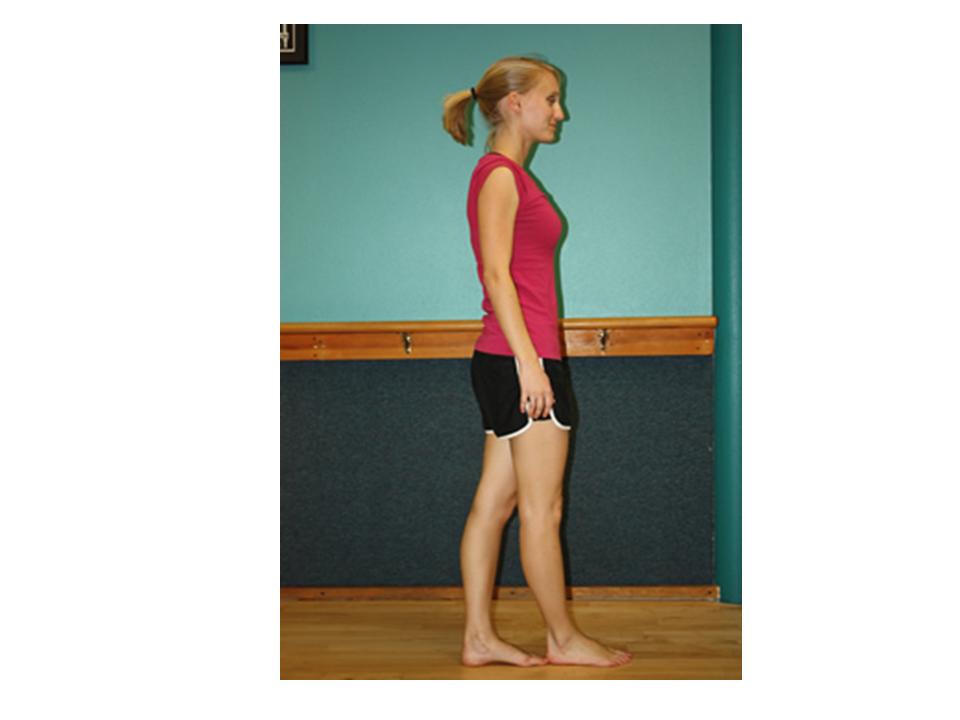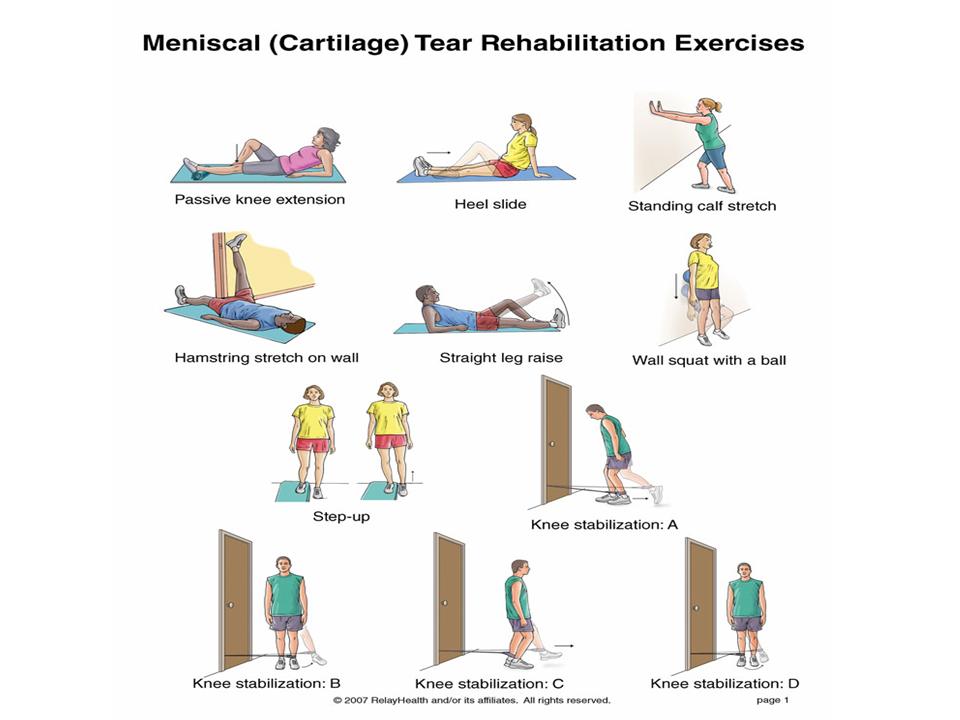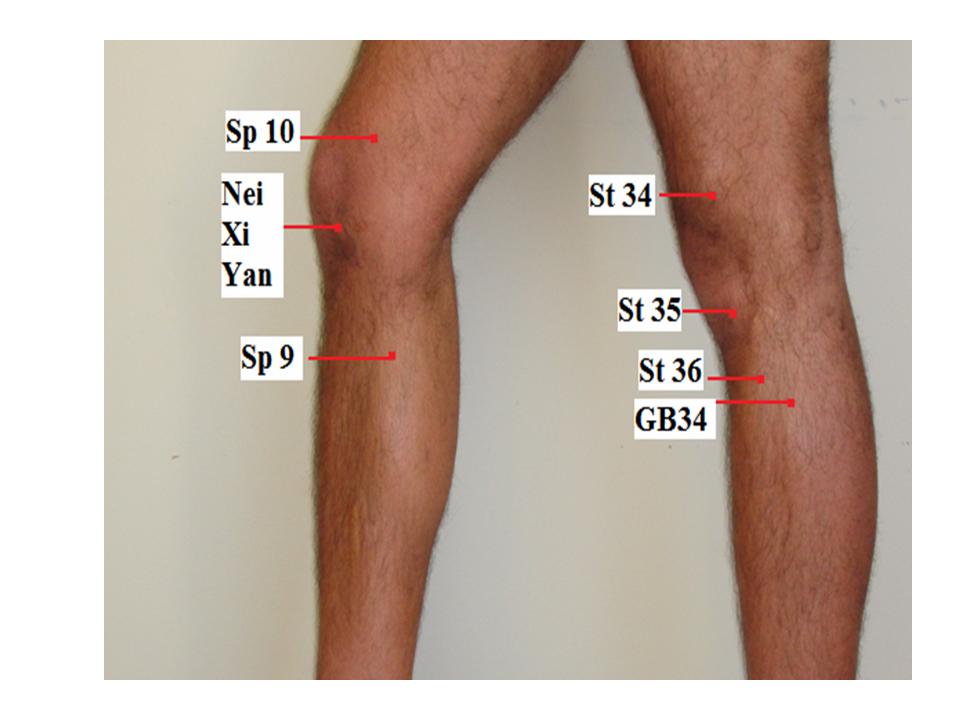News Letter, Vol. 3 (5), May, 2011, © Copyright
Jun Xu, M.D. Lic. Acup., Hong Su, C.M.D., Lic. Acup.
Robert Blizzard III, DPT
Rehabilitation Medicine and Acupuncture Center
1171 East Putnam Avenue, Building 1, 2nd Floor
Greenwich, CT 06878
Tel: (203) 637-7720 begin_of_the_skype_highlighting (203) 637-7720 end_of_the_skype_highlighting
Knee Pain – Meniscus Tear
Robert J is a 45 year-old male who loves sports, especially skiing, snowboarding and tennis. He came to me one day and complained of right knee pain on and off for about one week. He reports skiing one week ago while accelerating downhill while suddenly trying to make a left turn, when he fell in the snow. He felt immediately pain at right medial knee. However, he managed to walk down the slope. When he arrived at the base of the slope, he put ice right away on the right knee. His knee had mild swelling, but was not so painful. He thought his knee pain would gradually subside; he might not need to see a physician. However, for last the two days, he felt his right knee pain was getting worse, he had difficulty bending his right knee, and sometimes had his knee “locked” in certain position. He took Tylenol and Advil but did not feel any improvement. Therefore, he came to me for evaluation and treatment.
Based on his history, especially that he twisted his right knee during skiing; I suspected he might have either knee sprain or meniscus tear:
- Knee sprain : A knee sprain means that you have injured one of the four major ligaments around the knee joint. The most common symptom of knee sprain is knee pain, swelling and sometimes you may feel pop sound at the knee. Among the four ligaments, ACL is the most common form of injury.
- ACL: The anterior cruciate ligament is a ligament located at frontal knee. ACL prevents your lower leg, the tibia, from sliding too far forward, and is critical to knee stability, and people who injure their ACL often complain of symptoms of their knee giving-out if you have complete or partial tear of ACL, or frontal knee pain and swelling if you have just sprain of ACL.
Fig 5.1
Photo © A.D.A.M.
-
- The PCL, posterior cruciate ligament, is the ligament located at back of the knee, which prevents your lower leg, the tibia (shin bone) from sliding too far backwards. Along with the ACL, the PCL helps to maintain the tibia in position below the femur (thigh bone). The PCL injury is the so-called “dashboard injury,” when the knee is bent, and an object forcefully strikes your tibia backwards, like happened in the car or ski accident.
- The MCL, medial collateral ligaments, and the LCL, lateral collateral ligaments, located inside of the knee, connects the end of the femur (thigh bone) with the top of the tibia. The MCL and the LCL resists widening of the inside of the joint, or prevents “opening-up” of the knee. Impact force to lateral knee usually causes the MCL injury, and to medial knee, the LCL injury.
Fig 5.2
aclsolutions.com
Pain and Swelling of the knee are common with Knee sprain, i.e. the tears of ACL, PCL, LCL and MCL. When there is an effusion immediately after a knee injury, a possible cause is severe injury to a knee structure. The clinical differentiation of which ligament injured depends on the location of the knee pain, for example, the pain located at median knee might be MCL tear, in the frontal knee, possible ACL tear. The main difference between tears of ligament and meniscus is that there is swelling right away after ligament injury, for meniscus tear, the swelling usually comes in slowly after a few hours. However, a MRI is an absolutely necessary to identify the injured structure and guide the next step for the treatment strategically.
- Meniscus Tear:
There are two types of meniscus tears: medial and lateral meniscus tear.
The meniscuses are two wedge-shaped pieces of cartilage act as “shock absorbers” between your femoral and tibial bones. The one located in the medial side of the knee is called medial meniscus, the one in the lateral side called lateral meniscus. They are designed to cushion the joint and keep it stable.
Meniscus injuries are associated with cutting injuries. They occur with tibial (shin bone) rotation while the knee is partially flexed during weight bearing (football, soccer, ski, etc.)
The most common symptoms of meniscal tear are:
- Pain, you may feel “pop” sound at the accident
- Stiffness and slowly swelling with decreased knee range of motion
- Catching or locking of your knee
- Tenderness of the medial joint line indicates medial meniscus damage, pain in the lateral joint line may mean lateral meniscus injury.
There are three types of meniscus tears. Each has its own set of symptoms and the treatments are different.
A. Minor tear, you may have slight pain and swelling. It does not interfere your daily activities, but you do feel some slight pain and minimum swelling. This usually goes away in 2 or 3 weeks.
B. Moderate tear can cause pain at the side or center of your knee. Swelling slowly gets worse over 2 or 3 days with limited range of motion and moderate, tolerable pain, you may walk with mild or moderate pain. You might feel a sharp pain when you twist your knee or squat. The pain may come and go for years if the tear is not treated.
C. Severe tears, pieces of the torn meniscus can move into the joint space. You may feel severe pain and difficulty walking. The meniscus chips can make your knee catch, pop, or lock. You may not be able to straighten it. Your knee may feel “wobbly” or give way without warning. It may swell and become stiff right after the injury or within 2 or 3 days.
For age 65 or above, you may not remember the history of knee injury. You may only notice feeling pain after you got up from a squatting position, for example. Pain and slight swelling are often the only symptoms.
Clinically, it is rarely seen a single structure injury in severe cases, very often there are mixed injuries of meniscus and ligaments. The classic O’Donoghue triad (or unhappy triad) is characterized by an injury to three knee structures:
- the anterior cruciate ligament
- the medial collateral ligament (or “tibial collateral ligament”)
- the medial meniscus (however, lateral meniscus injuries are more commonly seen among athletes in recent studies)
Other knee injuries that may mimic knee ligament and meniscus tears:
1. Patellofemoral pain syndrome (PFPS): is a syndrome characterized by pain or discomfort seemingly originating from the contact of the posterior surface of the patella (back of the knee cap) with the femur (thigh bone). Runners, basketball players, young athletes and females especially those who have an increased angle of genu valgus (knock knees) are highly risk for PFPS. Typically localized anterior knee pain behind your knee cap is exacerbated by sports, walking, sitting for a long time, or stair climbing. Descending stairs may be worse than ascending.
2. Backer’s cyst: is an accumulation of joint fluid (synovial fluid) that forms behind the knee. A large cyst may cause some discomfort or stiffness but generally has no symptoms. There may be a painless or painful swelling behind the knee.
3. Pes anserine bursitis (often coupled with tendonitis): is a painful, inflammatory condition affecting the pes anserine bursa (and pes anserine tendon) between your shinbone (tibia) and the hamstring tendons at the inside of your knee; typically caused by stress to the area.
The following physical examination will help us differentiate the above diagnoses.
- Anterior draw test: this test is used to exam ACL injury. With the patient lying supine, the knee flexed to 90 degree, the examiner grasps the patient’s knee and pull lower leg forward, if an anterior motion and distinct endpoint felt, ACL tear could be clinically diagnosed.
Fig 5.3
- Posterior draw test: this test is used to exam PCL injury. As like ACL test, if a posterior motion and distinct endpoint felt, PCL tear is clinically indicated.
Fig 5.4
bestpractice.bmj.com
* Collateral ligament test: With the patient lying supine, the lower leg flatted without bending, the examiner apply force at medial knee with one hand and another hand on with opposite force at the ankle of same knee, if the patient feels pain at medial knee, that indicates the patient has possible medial collateral ligament injury, if the pain is on the lateral side, then it might indicate lateral collateral ligament injury.
Fig 5.5
www.vidrec.com
- Apley’s grind test: The patient lies prone with the knee flexed to 90 degree, the examiner places force downward on the heel compressing the menisci between the femur and tibia bones. In the mean time rotate the tibia while asking the patient report which portion of the knee is tender; the examiner could make a diagnosis of either medial or lateral meniscus tear.
Fig 5.6
netterimages.com
McMurray Test: The patient lies on their back, knee flexed to 90 degrees, as the examiner holds around the knee with their thumb and index finger on the joint lines. The knee is then extended as either internal or external rotation is applied by the examiners other hand at the ankle. If a click is heard or felt at the knee, the test is positive for a meniscus tear.
Fig 5.7
http://thesteadmanclinic.com/meniscus/diag.asp
By physical examination, Robert showed vague positive on medial collateral ligament test, and positive test of Apley’s Grind test. Because of the positive findings for both tests, therefore, it is medically necessary to have X-ray and MRI of the left knee.
- X-ray and MRI:
X-rays and MRIs are the two tests commonly used in patients who have meniscus tears. An x-ray can be used to determine if there is evidence of degenerative or arthritic changes to the knee joint. The x-ray of Robert’s left knee showed no narrow space, nor osteophysites, which guides me go ahead to order MRI.
The MRI is helpful at actually visualizing the meniscus.
Fig 5.8 Normal meniscus
Fig 5.9
Fig 5.10
Normal knee under MRI shows smooth edge without interruption as you may see from above, however, if there is meniscus tear, you may see the interrupted meniscus line and non lineated edge of the meniscus. Robert’s MRI showed left medial knee meniscus tear.
Treatment for Meniscus and ligament tears
Clinically, it is difficult to differentiate meniscus from ligament tears. However, in the early stage with mild to moderate cases of all the above diagnoses, the treatment is about same:
- Acute stage. In this stage the patient suffered a trauma or injury with acute pain, so it is necessary to use acronym PRICE measures for this stage.
- Protection. Use or crutches or a brace is necessary to help stabilize the joint to avoid weight bearing and prevent further damage.
- Rest. Reduce or stop the activities that caused the pain, which will help reduce the pain and improve the injury.
- Ice. In the acute stage, there is pain and acute inflammation. Ice will decrease this inflammation and should be applied to the injured knee three or four times a day for 20 minutes at a time. It also helps to rub the ice pack around the knee to protect the knee and decrease the pressure of the inflammation.
- Compression. Use of a compression bandage and massaging the damaged tissue helps to prevent fluid build up edema, and hard rubbing of the knee helps to strengthen it.
- Elevation. Elevate your leg with help of gravity will facilitate the fluid return from the swelling knee to your heart, which will decrease the knee swelling.
- Postacute Stage. For mild to moderate knee pain, the following can help:
- Anti-inflammatory medication. Non-steroid anti-inflammatory medication such as NSAID’s, including asperin, nanproxen and ibuprofen help decrease the inflammation and decrease the pain.
- Physical therapy. The proper exercises will strengthen the muscles around the knee and help to regain the knee stability. Samples of great non-weight bearing from non-weight bearing (NWB) movements to strengthen and stretch the muscles of the leg to weight bearing (WB) movements are described in detail in the previous newsletter concerning knee pain. The exercises below demonstrate a progression from NWB (straight leg raises, stretches) to WB with added resistance (knee stabilization exercises A-D, Wall Squats, Step-Ups)
Balance training, or proprioception, is critical to re-train the stabilizing muscles of the ankle, knee and hip. As demonstrated below a wobble board can be used once balance in a tandem stance, one foot in front of other, on a flat surface is mastered.
Fig 5.11
http://www.personallyfitonline.com/tandem-stance
Fig 5.12
http://www.summitmedicalgroup.com/library/sports_health/meniscal_tear_exercises/
Fig 5.13
http://www.summitmedicalgroup.com/library/sports_health/meniscal_tear_exercises/
- Acupuncture:
The acupuncture treatment for knee sprain and meniscus tear are about same. There are two major types of knee osteoarthritis based on Traditional Chinese Medicine:
- Wind hot: the knee is mild to moderate swollen, warm, or hot with severe tenderness
- Wind cold: the knee is very stiff, cold and heaviness, the pain is worse in the morning, difficulty moving, getting in or out of car, mild to moderate pain.
I choose the following acupuncture points for both type: LI 4 He Gu, LI 11 Quchi, St 35 Du Bi, Nei Xi Yan, Xue Hai, Liang Qiu, He Ding, Wei Zhong, I add Ying Ling Quan, Wei Yang for Wind hot, and Yang Ling Quan, Zhu San Li for Wind cold.
| Points | Meridan/No. | Location | Function/Indication | |
| 1 | Du Bi | Stomach 35 | When the knee is flexed, the point is at the lower border of the patella, in the depression lateral to the patellar ligament | Pain, numbness and motor impairment of the knee, beriberi |
| 2. | Nei Xi Yan | Extraordinarypoint | When the knee is flexed, the point is at the lower border of the patella, in the depression medial to the patellar ligament | Knee pain, weakness of the lower extremities |
| 3. | Xue Hai | Sp 10 | When the knee is flexed, 2 inch above the medial edge of patella. | Irregular menstruation, dysmenorrheal, uterine bleeding, amenorrhea, urticaria, eczema, erysipelas, pain in the medial aspect of the thigh |
| 4. | Liang Qiu | Stomach 34 | When the knee is flexed, the point is 2 inch above the laterosuperior border of the patella | Pain and numbness of the knee, gastric pain, mastitis, motor impairment of the lower extremities |
| 5. | He Ding | Extraordinarypoint | In the depression of the midpoint of the superior patellar border | Knee pain, weakness of the foot and leg, paralysis |
| 6. | Wei Zhong | UB 40 | Midpoint of the transverse crease of the popliteal fossa, between the tendons of biceps femoris and semitendinosus | Low back pain, motor impairment of the hip joint, lower extremities, contracture of the tendons in the popliteal fossa, muscular atrophy, pain, numbness of leg, hemiplegia, abdominal pain, vomiting, diarrhea, erysipelas. |
| 7. | Ying LingQuan | Sp 9 | On the lower border of the medial condyle of the tibia, in the depression on the medial border of the tibia | Abdominal pian and distension, diarrhea, dysentery, edema, jaundice, dysuria, enuresis, incontinence of urine, pain in the external genitalia, dysmenorrheal, pain in the knee |
| 8. | Wei Yang | UB 39 | Lateral to UB40, on the medial border of the tendon of biceps femoris | Stiffness and pain of the lower back, distension and fullness of the lower abdomen, edema, dysuria, cramp of the leg and foot |
| 9. | Yang Ling Quan | GB 34 | In the depression anterior and inferior to the head of the fibula | Hemiplegia, weakness, numbness and pain of the knee, beriberi, hypochondriac pain, bitter taste in the mouth, vomiting, jaundice, infantile, convulsion |
| 10. | Zu San Li | Stomach 36 | 3 inch below St. 35 Du Bi, one finger below the anterior crest of the tibia, in the muscle of tibialis anterior | Gastric pain, vomiting hiccup, abdominal distension, borborygmus, diarrhea, dysentery, constipation, mastitis, enteritis, aching of the knee joint and leg, beriberi, edema, cough, asthma, emaciation due to general deficiency, indigestion, apoplexy, hemiplegia, dizziness, insomnia, |
| 11. | LI 4 | He Gu | On the dorsum of the hand between th e1st and 2nd metacarpal bones, approximately in the middle of the 2nd metacarpal bone on the radial side. | Headache, pain in the neck, redness swelling and pain of the eye, epistaxis, nasal obstruction , rhinorrhea, toothache, deafness, swelling of the face, sore throat, arotitis, trismus, facial paralysis, febrile dieseases with anhidrosis, hidrosis, abdominal pain, dysentery, constipation, amenorrhea, delayed labour, infantile convulsion, pain, weakness and motor impairment of the upper limbs. |
| 12 | LI 11 | Qu Chi | Flex the elbow, the point is in the depression of the lateral end of the transverse cubital crease. | Sore throat, toothache, redness and pain of the eye, scrofula, urticaria, motor impairment of the upper extremities,abdominal pain, vomiting, diarrhea, febrile disease. |
Fig 5.14
Fig 5.15
Fig 5.16
Fig 5.17
- Corticosteroid injections: steroid injection can quickly decrease the inflammation and decrease the pain, however, it is not possible to use this treatment more than three times a year because there are too many side effects. These include risk of infection, water retention and elevated blood sugar levels.
Treatment for Robert: Robert was treated with both physical therapy for about 12 visits. Because it is a moderate left medial meniscus tear, he did not go through the arthroscopic surgery. After about 2 to 3 treatments, his knee swelling was subsided, about 6 visits, his pain was gradually decreased. He was discharged from my clinic after 12 visits, he was given home exercise program to strengthen his quadriceps at home.
Tips for patients:
- Always apply ice to your knee, if you have knee injury after any accident. You’d better use the PRICE procedure as I mentioned above.
- Always exercise your quadriceps muscle, this group muscle can protect your knee structures, even you do not have any knee injury now.
- You must have a clear diagnosis, if your diagnosis is severe knee meniscus or knee ligament tear, I do not recommend conservative treatment.
Tips for acupuncture practitioners:
- Acupuncture and physical therapy only can treat mild to moderate knee sprain and meniscus tears. For severe knee sprain and meniscus tears, you have to wait until the patients have arothscopic surgery done. You may then start acupuncture and physical therapy treatments.
- Bike and swimming exercises should be encouraged as long as the patients are out of acute stage.
- Always encourage your patients use ice after exercise for their knees.



















4 comments
Pingback: 7 weeks and no symptoms? | Pregnant Lady Zone
Pingback: 29. Knee Pain and Meniscus Tear « Jun Xu, M.D. (203) 637-7720 | Bad knees
chapter 7 bankruptcy
April 9, 2012 at 8:45 am
Wonderful goods from you, man. I’ve remember your stuff previous to and you are simply extremely excellent. I actually like what you have received right here, really like what you’re saying and the way in which during which you assert it. You make it entertaining and you still take care of to keep it smart. I can not wait to learn far more from you. That is really a terrific site.
Mohammadreza Maroufi
January 26, 2015 at 4:45 am
Hello, thank you very much , you described all things is necessary for everyone who had a knee accident simply and complete and useful .
But I think it was more complete and more effective if the herbal TCM treatment was added , like as
Qi movings ( Xiang Fu , Wu Yao ….. ) ,
Blood activatings ( Chuang Xiong , Ru Xiang , ….. ) ,
Qi tonics ( Ren Shen , Huang Qi , Gan Cao ….. ) and
Spasm stoppings ( Gou Teng , ….. )
Sincerely yours
Dr. Maroufi